Social media at SXSWi: the top five talking points
We sent PR consultant Katie Moffat to the biggest geek festival on the planet, SXSW Interactive, to find out all about the latest trends in social media. This is her report
This year’s SXSW Interactive in Austin, Texas, was perfect for the planeloads of Brits that arrived en masse; endless discussion about the weather and plenty of queues to join. But despite the torrential rain on the first couple of days and the fact that SXSWi has really become much too big for its own good, it still remains a fantastic event to pick up on interesting new platforms, identify trends and immerse yourself in technology for five days. So what were the conversations around social at SXSW Interactive 2012?
1. There was no ‘king of the apps’
Every year running up to SXSW there is an incredible amount of hype around which app, of the hundreds that fight for attention, will be the stand out winner. Which will grab the attention of the geeks to such an extent that it is propelled into the limelight. Past winners of this unofficial crown have included Twitter in 2007 and Foursquare in 2009. This year the talk was all about ‘social discovery’: essentially these are apps that use your physical location to suggest people close to you that you might have something in common with. Battling it out for the title was Glancee and Highlight, with other platforms including Banjo, also fighting to be noticed.
The idea behind social discovery apps is a sound one. In a nutshell they are trying to accelerate serendipity, helping you to find that person who could get you a new job or commission, secure you funding, or just connect you with a useful offline network. The difficulty however, and one of the reasons they didn’t really take off at SXSW is that the current iterations aren't really sophisticated enough to be genuinely useful. Glancee and Highlight currently use Facebook as a login (and therefore as its data source in terms of how it makes connections between people), more often than not, this results in clumsy pairings, ie it suggests a possible contact because you ‘both like TED talks’ on Facebook, and therefore most of the time, it’s not specific enough to be of value. To be fair, both Glancee and Highlight acknowledge that the current versions are not perfect and are working on improving them. I spoke to Glancee founder Andrea Vaccari about his thoughts on social discovery apps and his future plans.
The other issue at SXSW, for both of these apps, was that they do tend to drain your phone battery, that’s never going to be popular at an event where a charged phone is an essential piece of kit.
For now at least, with social discovery, it’s a case of watch this space.
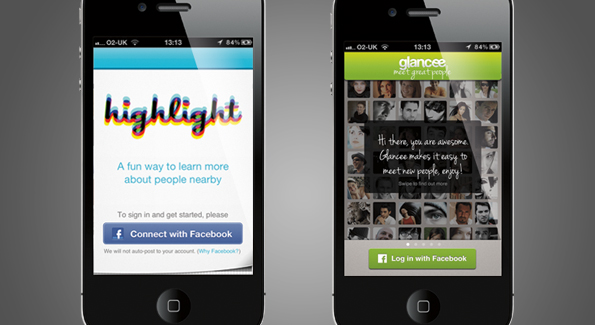
2. Social local mobile is massive
While social discovery apps might not have gained the anticipated traction, there was still a great deal of talk about ‘solomo’ or social local mobile (yes, it is an awful moniker but seems we’re stuck with it). Solomo is essentially the idea of delivering, via mobile, useful information to people about the place where they are. Up until now the main focus has been on businesses using mobile platforms to push information about local deals nearby but that could all be about to change thanks to technology like geoloqi, an amazing platform, showcased in her SXSW keynote, by the equally impressive Amber Case.
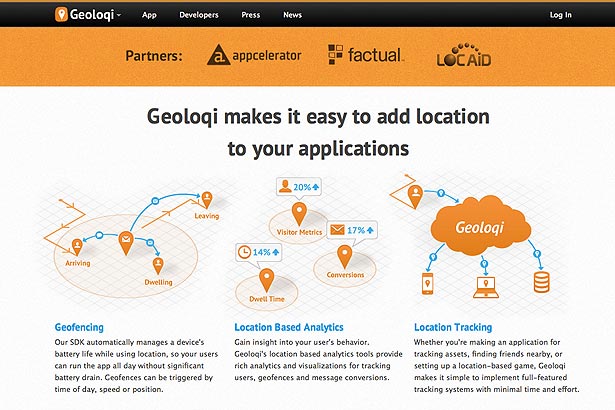
Geoloqi offers a range of tools to help developers create apps that using geofencing or location tracking and it can provide insights based on users' behaviour. Some of the current tools using this include a Wikipedia app that notifies you when you are in the vicinity of a place that has been written about in Wikipedia. The future possibilities of this are massive, as Amber outlines in this article in Time magazine.
Get the Creative Bloq Newsletter
Daily design news, reviews, how-tos and more, as picked by the editors.
“Imagine travelling to Los Angeles, and when you land, your smartphone instantly alerts you with information about the address that you’re heading to. More than that: Geoloqi has cross-referenced your arrival time with the bus schedule, and it alerts you about the departure time of the next bus that will get you to your destination. Now once you’re on the bus, the phone alerts you when you’re approaching your stop, allowing you to doze off during the drive in.”
Now that beats being crowned the mayor of your local coffee shop.
3. There are plenty of interesting new tools and technologies
Yes, there’s a lot of hype around SXSW and this year more than any other, it was often difficult to fight your way through the mass of app developers giving away promotional t-shirts/sunglasses/raincoats but it’s still a great place to spend time discovering new apps and platforms. Here are five of my favourites:
- Lanyrd, only 18 months old yet this great tool from Brighton-based husband and wife team Simon and Natalie was one of the most used platforms at SXSW 2012. They used this year’s conference to launch another great feature; showing you what panels were on ‘next and nearby’ to your current location. Listen to my conversation with them about what is was like being part of Y Combinator, the challenges of running a startup and their future plans. Also check out Lanyrd's most popular SXSW sessions.
- Deadsocial, part of the UKTI digital mission to SXSW, deadsoci.al enables you to carry on your social footprint from the grave. Controversy is never a bad thing in the world of social media.
- Thirst labs, this year’s winners of the Microsoft BizSpark Accelerator competition (always worth taking note of the winners and runners up). Yet to launch, Thirst is a mobile app that “uses natural language algorithms to help you simply, organise and understand your social streams”.
- Bonfireim, instant messaging for Twitter. For when DMs are not enough. Also has extremely useful hashtag search option, great as a backchannel at events. Listen to my chat with founder Josh Russell as he explains why IM for Twitter could be massive.
- Social safe, we spend so much of our lives adding content to social networks, doesn’t it make sense to have a back up of all that content? There are other services that do similar but not one that covers so many networks in one and that presents the downloaded data in an easy to use format.
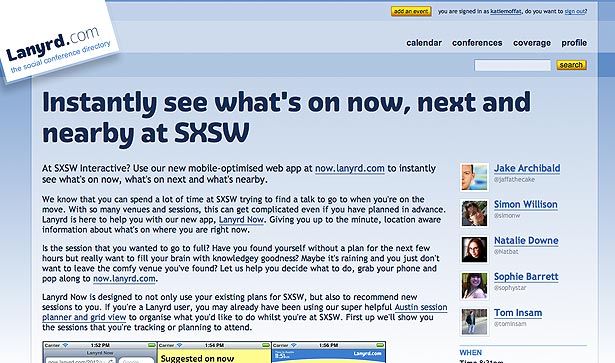
4. Curation is increasingly important
Although curation is overused as a term, good curation is increasingly important in an online environment stuffed full of information and social media noise. In a panel featuring an all-star cast including David Carr from the New York Times, Maria Popova of brainpickings fame, Mia Quagliarello, content curator for Flipboard and Max Linksky from Longform, there was an interesting debate about curation and whether it has the negative effect of reducing the amount of quality content on the internet. Carr expressed his fear that we’ve reached a point where sharing interesting content has some form of ‘social cachet’ associated with it, and is used, by some, as a way to try and demonstrate intellectual prowess.
While there was debate around the fear that curation just recycles content and adds nothing new to the pot, it was generally agreed that effective curation is valuable. Popova used the panel to announce the launch of The Curator’s Code, ‘A suggested system for honoring the creative and intellectual labor of information discovery by making attribution consistent and codified, celebrating authors and creators, and also respecting those who discover and amplify their work’. Also see our interview with Popova.
Elsewhere at SXSW, curation tool Storify was very visible. Founder Bert Herman talked about how he likes to see it used. They also launched ‘my sxsw story’ a tool which pulled in content from a range of your social networks including tweets, check-ins and instagrams, and automatically created a daily storify for you. And like Mashable, they even produced a special edition Storify printed newspaper, it seems that even at SXSW, print is far from dead.
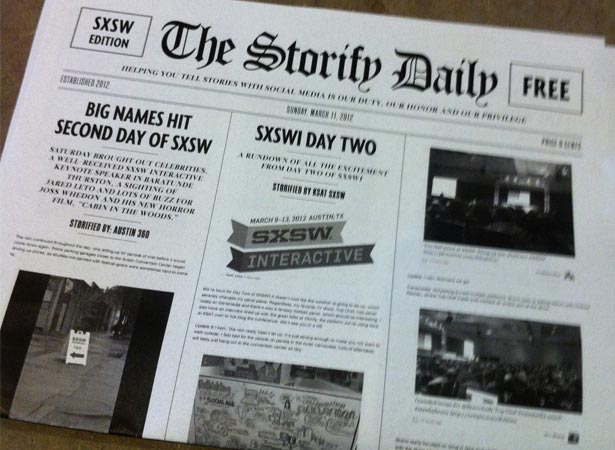
5. Pinterest felt the love of the crowd
On the last day, Ben Silbermann, founder of Pinterest, received a rapturous welcome by the SXSW crowd, to his Q&A session. He talked at length about their early struggles, first with building the platform and then gaining traction and how it was only after attending a conference for designers who liked the idea of the ‘online scrapbook’ that he started to see it used how he originally intended it. A low key, personable and clearly highly intelligent guy, he seemed a little bemused with the recent sudden explosion in attention, but grateful for it non the less.
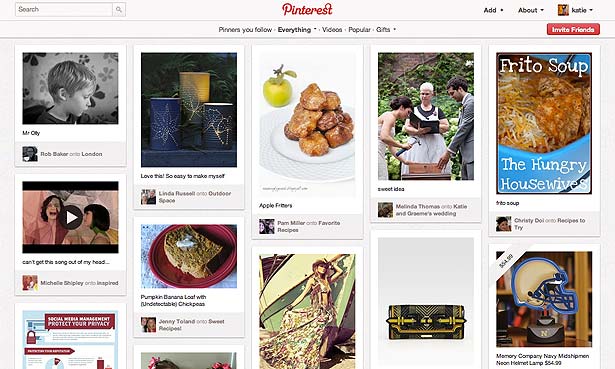
He also used the stage as the platform to announce the (now launched) new profiles, a forthcoming iPad app (sure to appeal to the highly visual users of Pinterest) and to reassure those desperate devs that an API will be on its way. What’s for sure is that his stated aim for Pinterest will certainly resonate with ecommerce outfits who are thanking Pinterest for a surge in traffic, Silbermann said: ‘We want to help people discover things that they didn’t know they wanted.’

Thank you for reading 5 articles this month* Join now for unlimited access
Enjoy your first month for just £1 / $1 / €1
*Read 5 free articles per month without a subscription

Join now for unlimited access
Try first month for just £1 / $1 / €1
The Creative Bloq team is made up of a group of design fans, and has changed and evolved since Creative Bloq began back in 2012. The current website team consists of eight full-time members of staff: Editor Georgia Coggan, Deputy Editor Rosie Hilder, Ecommerce Editor Beren Neale, Senior News Editor Daniel Piper, Editor, Digital Art and 3D Ian Dean, Tech Reviews Editor Erlingur Einarsson, Ecommerce Writer Beth Nicholls and Staff Writer Natalie Fear, as well as a roster of freelancers from around the world. The ImagineFX magazine team also pitch in, ensuring that content from leading digital art publication ImagineFX is represented on Creative Bloq.
